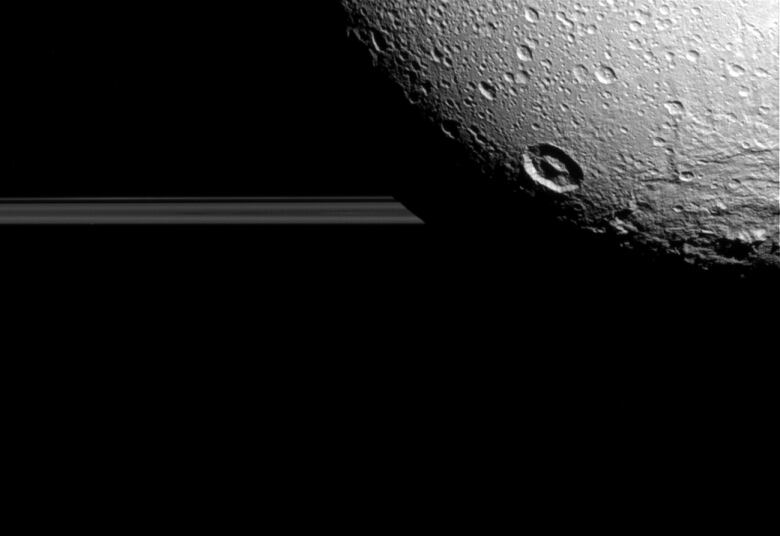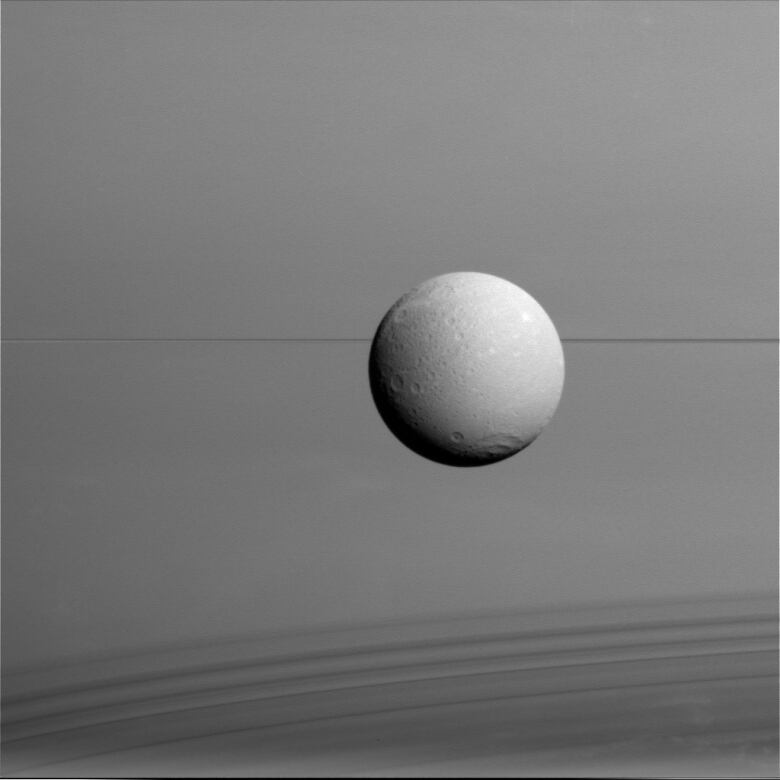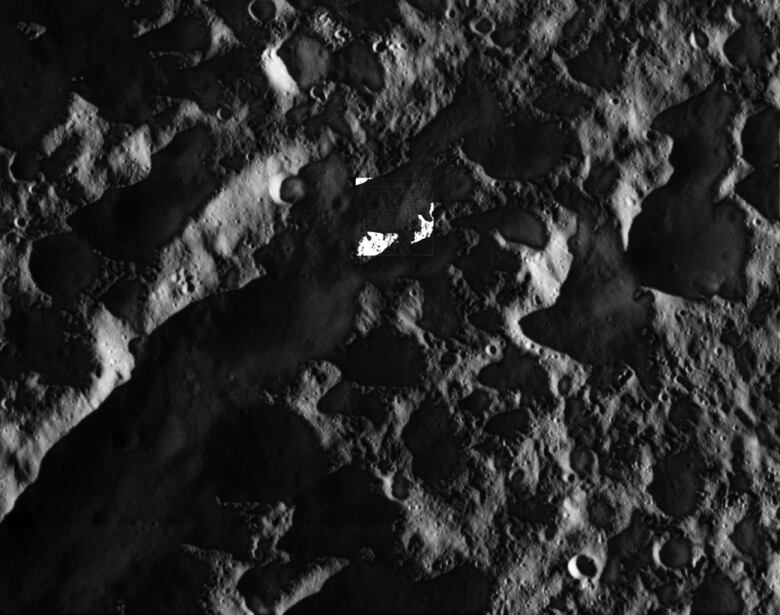Saturn's moon Dione captured in stunning detail
Next for Cassini: Extremely close encounters with Enceladus
A crater-coated moon called Dione is illuminated against thebackdrop of Saturn and itsrings in stunningnew images captured by NASA's Cassini spacecraft.
The new images, taken during the spacecraft's final flyby of Dione last week, include two of the sharpest images ever taken of the surface of Dione, the fourth-largest among the dozens of known moons of Saturn.
- Saturn moon birth may have been seen by Cassini spacecraft
- Saturn moonEnceladushas underground ocean
- Saturn's largest moon undergoes crater makeover
Cassini passed within 474 kilometres of Dione's surface on Aug. 17. That wasn't its closest flyby, but reflected sunlight from Saturn made it possible to see details in the shadows of some of the images, said Tilmann Denk, a Cassini participating scientist at Freie University in Berlin, in a statement.

The goal of the flyby wasn't imaging, but gravity measurements intended to gather clues about Dione's interior structure and the processes affecting its surface, NASA said. That meant the spacecraft was pointed in the direction that gave the best gravity measurements rather than the best pictures.
"We had just enough time to snap a few images," Denk said.

Dione is about 1,120 kilometres in diameter about one-thirdthe diameter of our own moon and orbits around the same distance from Saturn as our moon from the Earth. It's the fourth-largest of Saturn's 62 confirmed moons.
After leaving Dione, Cassini will make three flybys of Enceladus, a moon known for its icy geysers, including one on Oct. 28 that will bring it just 49 kilometres from the surface.

It will spend the next two years viewing Saturn's moons, both large and small, from a greater distance before diving 22 times through the space between Saturn and its innermost ring and then plunging into Saturn's atmosphere.
Cassini launched in 1997with theEuropean Space Agency's Huygens probe, with a mission to study Saturn, its rings and its moons. They arrived at Saturn in 2004 and the probelanded on Titan in 2005. The Cassinimission was supposed to end in 2008, but was laterextended until 2017.

Corrections
- An earlier version of this story said Dione is two-thirds the diameter of the Earth's moon. In fact, it's one-third the diameter of our moon.Aug 26, 2015 8:37 AM ET












_(720p).jpg)


 OFFICIAL HD MUSIC VIDEO.jpg)
.jpg)



























































































